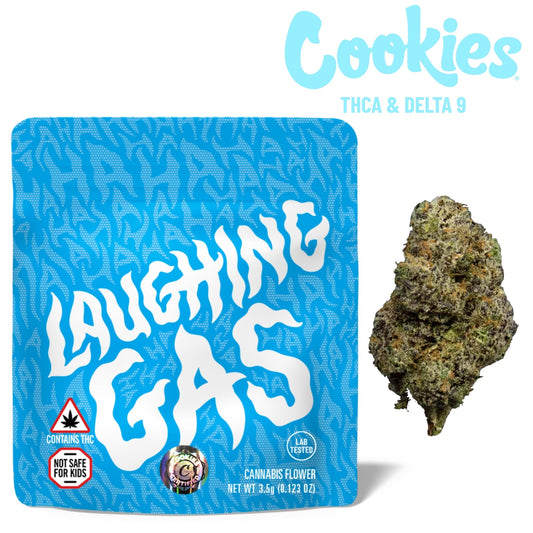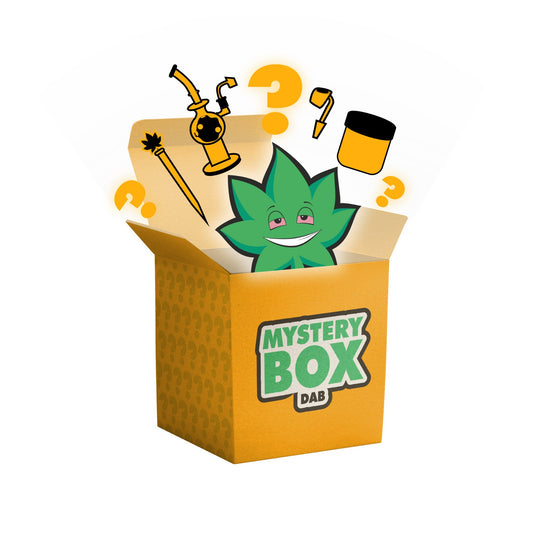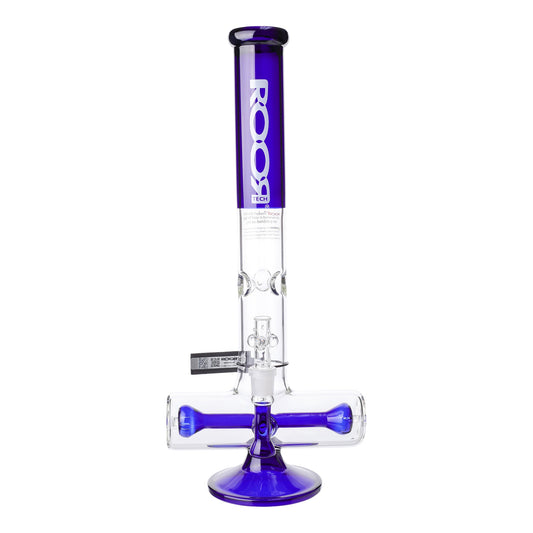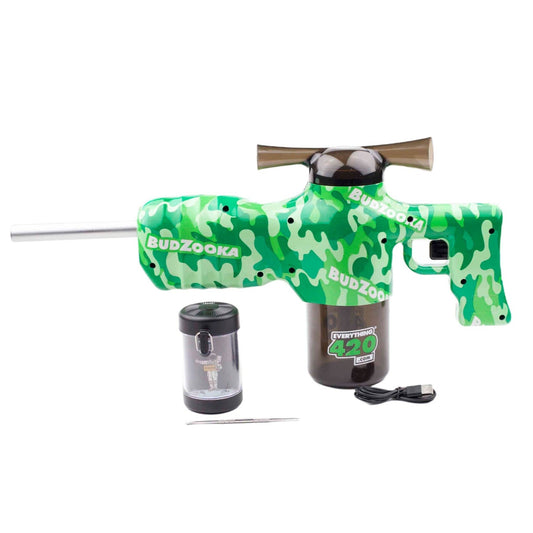Growing herb plants is considered by many to be an art form and with so many different methods, equipment, and techniques used by cultivators, it’s easy to see why. When talking about herb cultivation, the most common thing that comes to mind is an indoor setup of potted plants under bright grow lights or an open-air farm with fields of bushy plants. Growers that utilize a hydroponic setup are more of a niche community, but there are a few huge advantages to going soil-less. If you’re interested in learning more about growing hydroponic herb plants and want to know what’s involved, how it’s done, and the basic equipment needed, you’ve come to the right place. Let’s jump right in!
What is hydroponic growing?
You’ve probably heard about hydroponic farming or at least seen a label in the produce section that mentioned the term. Hydroponics falls under the broader category of hydroculture. This growing method swaps out soil for another type of growing medium such as rockwool or coco coir, that helps to support the roots so that the plant can thrive off of the nutrient-rich water. Normally, plants will spread out their roots in a search to absorb nutrients and water that’s held in the soil. With hydroponic setups, the plants have unlimited access to water and nutrients, so they don’t need to grow massive root systems to support the plant. This results in larger plants and higher yields. Hydroponic growing differs from aquaponic growing since the former requires cultivators to artificially add nutrients to the water. Aquaponic setups are fully sustained as the nutrients the plants need to thrive are provided by fish by-products, and the fish that live in the nutrient-rich water are able to grow due to the natural filtration properties of the plants.
What are the advantages of hydroponic growing?

While it may sound strange to grow hydroponic herb or any plant without soil, there are many advantages in doing so. The main reasons cultivators decide on a hydroponic setup is that the plants grow much faster and nutrient delivery is easier and more efficient. These are a few other key advantages of choosing a hydroponic grow setup:
- Those with small grow spaces love hydroponic setups since it takes up roughly 20% less space than a normal soil-based grow.
- Cultivators have complete control over the entire growing process from pH levels and exact nutrients, to the temperature and lighting schedule, which is impossible for outdoor grow setups.
- A hydroponic setup will save you money in the long run. Roughly 90% of the water used is recycled, so both the water and nutrients are utilized much more efficiently than soil-based setups and there’s no need to repurchase expensive soil for every crop.
- Plants grown hydroponically will grow anywhere from 30% to 50% faster and yield more than soil-based setups.
- There’s no need for added chemical products like pesticides, so it’s easy to grow an organic product.
- It’s much more sustainable and environmentally friendly than a traditional home grow that can use up to 20 times more water than a hydroponic setup.
- A hydroponic setup can produce amazing bud all year long in any type of climate since the grower controls the environment.
- Most importantly, the final product may be more potent if the plant is grown hydroponically vs in soil. We’re not joking. There’s a reason some dispensaries put a higher price tag on organic, hydroponically grown bud and this is one of them.
Are there drawbacks to hydroponic systems?
With so many positive aspects to growing hydroponic herb, you may be thinking, “why would anyone grow with soil?” While there is a multitude of advantages, every type of grow setup also has its drawbacks. The main reason home growers are dissuaded against a hydroponic setup is the initial cost of setting one up. A few other drawbacks include:
- Growing hydroponic plants requires lots of attention and constant monitoring. This can be too time-consuming for most. There are several companies that have designed special equipment to monitor this type of grow setup via an app on your phone, however these can be very pricey.
- If a single plant is ill and diseased, there is the potential that the entire crop may fall victim as well and die. After putting in so much time, effort, and cash with nothing to show for it, this can be devastating.
- It’s easy to forget that hydroponic setups are very technologically advanced. If the power goes out for an extended period of time, this could mean the loss of the crop and growers will be forced to water the plants and provide nutrients by hand.
- As mentioned earlier, hydroponic setups have a high initial startup cost in comparison to other growing methods. If you’re willing to build the setup yourself, it can cost $100 to $200, with a high-tech system costing thousands of dollars.
Do hydroponic plants grow faster than soil-based plants?
Yes! This is one of the biggest advantages of growing hydroponic plants because who wants to wait around longer than necessary to smoke the final product? Plants grown in soil-less setups have a growth rate that is up to 50% faster than traditional soil-grown plants. This is because nutrients and water are more efficiently absorbed through the root hairs and the plant can focus its energy on vegetative growth and flowering instead of building up a large root system. Luckily, this all applies to ganja too! Hydroponic setups will easily cut down the grow time so cultivators can harvest the flower sooner and immediately start a new crop for constant bud year round.
In what situations should you use hydroponic growing?
A hydroponic setup can be done in almost any situation, however it’s most ideal for cultivators who have limited space to grow. This method of growing takes up a lot less space since no pots are needed and the plants can be very close to each other and still thrive. If you’re not sure if you want to grow more than one crop or may not grow for more than one or two seasons, it’s less work and less expensive to have a traditional indoor or outdoor setup. If you fell head over heels for your new hobby and are sure that you’ll be cultivating plants for years to come, that’s a great reason to switch over to a hydroponic setup, since you’ll get the absolute most out of it.
Is hydroponic growing worth it?
Growing hydroponic plants is almost always worth it, unless you’re unsure if growing herb is something you want to continue to do. Even then, there’s a huge market for hydroponic equipment and it’ll be very easy to sell your setup and recoup some of your investment. As mentioned earlier, each plant will grow quicker, have much higher yields, and can potentially produce more potent flower than soil-based growing methods. This alone makes growing hydroponic herb worth it for most hobbyists.
What’s the difference between active and passive hydroponics?
To understand about active and passive setups, you first need to know that there are several types of systems that growers use. There are seven main types of hydroponic systems that are known to work well, these are deep water culture (DWC), wicking, nutrient film technique (NFT), aeroponics, the Kratky method, ebb and flow, and drip systems. Wicking and Kratky are the cheapest, most basic, and most common type of setup for home growers, while aeroponics is the most expensive and technologically advanced of the bunch. While we won’t go into detail on each of these specific setups, it is important to learn what a basic setup entails, as well as the difference between active and passive hydroponics. Here’s a quick breakdown of the seven types:
- Wicking - For those trying to cut costs or have the most eco-friendly hydroponic system, a wicking setup doesn’t require a pump, aerator, or electricity, unless you use a lighting system. A very absorbent growing medium like perlite is used and nylon wicks that are in a nutrient solution are placed around each plant. This system is best for lettuce, herbs, and other small plants and is not meant for large plants or those that have high nutrient needs like herb.
- Deep water culture (DWC) - Similar to the wicking system, this basic hydroponic setup puts the roots directly into the nutrients and water without any type of barrier in between for the most direct absorption. Because they are in direct contact with the fertilizers, the plants grow very quickly. An air stone, aerator, or diffuser is needed to provide the plants with enough oxygen since they are completely immersed in the water mixture.
- Kratky - One of the simplest and best systems for herb home growers trying to stick to a tight budget is the Kratky method, which is very similar to a deep water culture system, except that there is a gap of air left at the top of the reservoir between the water mixture and the plants. This eliminates the need for an air stone or diffuser and allows the plants to drink up as much or as little water and nutrients as it needs. The root system will grow down into the reservoir to absorb the liquid. While passive, this type of system needs to be checked often and the water and nutrient mixture needs to be replenished before it runs empty to avoid stunted growth.
- Nutrient film technique (NFT) - No, we’re not talking about that monkey with an earring smoking a cigarette. This type of NFT efficiently utilized nutrients by passing it over the plants’ root systems and recycling it back using a pump and reservoir. Growers swap out a growing medium for net pots that fit in a channel. While it scales up easily, this type of system isn’t ideal for growing hydroponic herb due to the plant’s medium to large root systems.
- Aeroponics - The most technologically advanced, difficult to build, and the priciest type of hydroponic system is aeroponics, however it is also the system that uses the least amount of water, cutting costs over the long term. Plants are suspended in the air without a growing medium and a mixture of water and nutrients is sprayed directly onto the free-standing root system. It’s great for smaller spaces since the plants are hung vertically, but an extra large water reservoir and a pump and sprayer system is required.
- Ebb and flow - Also called a flood and drain system, this hydroponic setup periodically fills with nutrient-rich water and then drains completely. It requires a large bed, strong pump, and a timer to control the filling and emptying of the water. Ebb and flow systems have two downsides. The first is that it is heavily reliant on the pump and timer, so if either of these electronics stop working, it could be a disaster. The second is that despite being a great setup for all types of plants, large plants like herb require lots of space and a massive bed.
- Drip - A drip system is a good option for all kinds of plants. It gets its name due to the way the nutrients are delivered. Tubes with a drip emitter are placed at the base of each plant and connected to a pump, which will deliver the fertilizer directly to the plant, drip by drip. The flow rate can be changed for each plant and if the system is left to drip constantly, the unused nutrients can be recycled back into the system to reduce waste.
Active vs passive hydroponic systems
All of the different hydroponic setups mentioned above can be split into two categories, active or passive. Active systems are those that utilize a pump to move the nutrients and water in combination with an air stone or aerator of some sort. Deep water culture, the nutrient film technique, ebb and flow, drip systems, and aeroponics are all active hydroponic systems. Active setups are less work since they can be automated and utilize the water and nutrients more efficiently. Passive setups are less expensive and more basic than active systems as they don’t require electricity to provide plants with food and water. A wicking system and the Kratky method are both examples of passive hydroponics. Since they are cheap, very easy to build, and have lower electricity usage, passive systems are ideal for novice cultivators trying their hand at hydroponics.
Hydroponic vs normal grow setup
There are a few differences in the system itself when doing a normal grow setup vs a hydroponic system. Most obvious is the growing medium. A normal indoor grow requires soil and pots. The plants will need to be transplanted into larger pots once they outgrow their home and must be watered, either by hand or with an automatic watering system. Plants in a hydroponic system typically do not need to be touched once they’re in place since the roots have lots of space to grow and in most cases have direct contact with food and water. Normal grow setups often take up more space than soil-less methods since they require pots. A hydroponic system will typically have higher initial costs, but most of the equipment can be reused, whereas normal grows need fresh nutrient-rich soil for each crop. The plants will usually be larger and have a higher yield with potentially more potent flower when grown hydroponically due to the way the nutrients and water is delivered. Normal setups also utilize more nutrients and water than soil-less systems since it is a less efficient method. Overall, there are advantages and disadvantages to both types of home grows. Many novice growers start with a normal setup to get the hang of the plant life cycle and needs before investing in and switching over to a hydroponic system. Just like a normal garden, you get what you put into your grow.
What is the cost of hydroponic herb?
One of the most common questions asked about growing hydroponic plants is the cost. Soil-less grows sound expensive and high-tech, but it doesn’t have to be that way. A very basic Kratky system can be made out of plastic 5-gallon buckets and won’t break the bank. It’s a great way to get started with this type of growing. There are a few essential pieces of equipment that all hydroponic systems need to perform at their best. The costs will be much lower when doing a full DIY setup, but this will take time, research, and some trial and error if it’s your first grow. Expect the initial setup costs for new equipment to be roughly $1,200 and up, not including water and electricity. Again, this varies greatly depending on the type of hydroponic system, if you’re able to get second hand materials, how many plants you’ll have, and how much of it will be a DIY project. A very small grow space with just a couple plants can easily cost $900 or less to set up. A complete kit with everything you need right out of the box will cost significantly more.
What is the cost per plant based on average yield?
Going soil-less is known for boosting bud production and producing massive yields. This is one of the main reasons cultivators are willing to shell out the cash for a hydroponic setup. All home growers with hydroponic systems will definitely produce dry herb cheaper than what’s sold at the dispensary, however it’s very difficult to accurately estimate these costs since many variables need to be taken into account. First, utility costs vary by location as well as the cost of initial setup of the system, which has many materials that can be reused for future crops. The specific strain grown also makes a big difference since some have longer grow times than others, which adds to the overall costs
The brighter and stronger the light, the more the plant will yield, so it’s definitely worth it to invest in a good lighting system. A normal indoor grow using soil will have up to 42 oz of bud per plant when using a 1200 watt system. A 600 watt lamp will equate to roughly half the yield per plant. Hydroponic plants will produce around 24 to 25 oz of dry herb with a 600 watt lamp and 48 to 50 oz with a 1200 watt system. To maximize yields and reduce the costs of the entire operation, be sure to use a powerful lighting system that’s the right wattage for the grow tent or grow space and number of plants. It goes without saying that you’ll get more flowers when the plants are healthy and happy, so be sure to regularly monitor the climate including the pH, temperature of the air and water, density of the water, nutrients, and light. Also check for issues such as algae build up that can kill plants and pests like root aphids and spider mites.
What materials are needed for a hydroponic system?

This is a quick breakdown of the key pieces of equipment needed for a basic indoor hydroponic system and its approximate cost:
- Lighting system ($200 and up) - A light-emitting diode (LED) or high-pressure sodium (HPS) bulb setup are the most popular amongst the 420 growing community since they are energy efficient and produce very strong light that plants need to grow big and strong.
- Light hangers ($30 and up) - This may already be included in the lighting system depending on the type purchased, however buying bulbs and light hangers is typically more cost effective. Light hangers hold up the bulbs from the ceiling and can be lifted or lowered manually or automatically as the plants grow.
- Grow tent ($650 and up for a complete kit) - This is optional, but highly recommended as grow tents will ensure the plants are getting the most light possible. There are forums dedicated to those who create their own DIY grow tents, however a true indoor grow tent will contain the light better, are often complete systems with air circulation, and will better reduce electricity costs.
- Ventilation fan system ($160 and up for a full system) - As mentioned earlier, some grow tents have a ventilation or circulation system already built in, but you may need to get a separate ventilation fan, ducting tubes, and carbon filters separately if constructing your own DIY grow tent.
- Net pots ($15 and up for a set) - Great for most systems and reduces the barrier between the nutrients and roots. These are cheap, easy to find secondhand (be sure to sanitize and clean them), and reusable.
- Growing medium ($10-$30) - Coco coir, rockwool, perlite, and clay pebbles are the most popular choices in hydroponic systems to help support the roots.
- Hydroponic nutrients ($50-$100) - The makeup of the nutrients will change depending on the stage of the life cycle the plant is in. Be sure to have the correct ratio and a hydroponic specific solution. Powdered nutrients that dissolve easily into water are cheaper over time than the liquid premixed type. When in the vegetative stage, the plants will need a higher ratio of nitrogen (N), while more phosphorus (P) is best during the flowering phase to produce the maximum number of buds. Whatever you do, don’t make the beginner mistake of over or under feeding your plants!
- pH tester ($30 and up for a digital tester) - It’s essential to regularly check the pH levels to ensure the plant is happy and will grow to its full potential. Systems that recycle nutrients will need to be checked more frequently. The pH level should always remain between 5.5–5.8, except during the flowering stage, where the plants like a pH level of 6.0.
- Thermometer and hydrometer ($20 to $50) - The temperature of the air and water matters when growing herb. The plants thrive in water temperatures that remain right around 68°F (20°C). A hydrometer is used to determine the water’s density with the added nutrients.
- Water reservoir ($5 and up) - It can be as basic as a cheap 5-gallon plastic bucket.
- Hydroponic tray ($30 and up per tray) - This holds the plants in place and acts as a grow bed.
- Air stone or diffuser ($20 and up) - Optional depending on the type of setup used.
- Pump ($30 and up) - Also not required if a passive hydroponic setup is used.
- Cannabis seeds ($7 and up per seed) - Let’s not forget about the most important thing! Splurge on quality genetics from a reputable seed bank for the best growing experience and final product. Be sure to check the approximate grow time and size of the plant. Shorter, bushier indica strains do the best in indoor hydroponic setups.
For autoflowering and feminized cannabis seeds in addition to other growing equipment, visit the EF420 online smoke shop. You’ll also find a bunch of luxury smoking accessories like dry herb vape pens, heady glass bongs, pipes, rolling accessories, and storage containers for after the harvest.










































































































